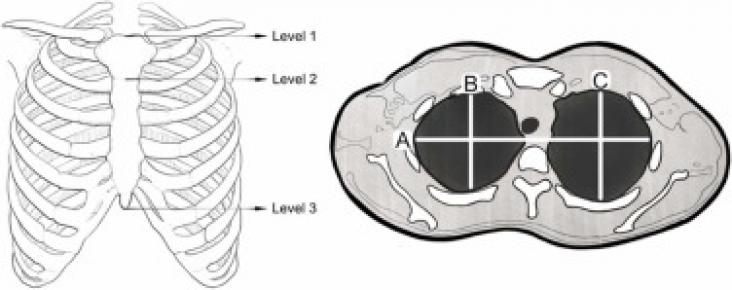Ticks: Biology, Ecology, and Diseases, 2023, Pages 193-215
This chapter advances the UN SDG Goal 3: Good Health by covering the range of approaches to the control of tick and tick-borne diseases.

Background: In patients with cystic fibrosis (CF), thoracic morphology and its role in respiratory function is conditioned by anthropometric factors, as well as by pathological changes. While the lungs are continuously monitored, examinations of potential thoracic cage adaptations to the disease are rare. Hence, the aim of this study was to investigate thoracic configuration, and its correlation to spirometry measures over time. Methods: In total, 344 high-resolution computed tomography (HRCT) examinations from 90 patients were assessed and analysed. Those results were subsequently related to spirometry measurements performed within the same period. Results: The cohort displayed no homogenous change in thoracic configuration over time, and correlation between thoracic area and spirometry variables could not be supported statistically. Conclusions: Although the current study included a larger cohort of patients with CF compared to previous studies on thoracic morphology, no patient group-specific changes in thoracic configuration were revealed. Furthermore, no correlations between structural findings and functional respiratory measurements were found.
The article discusses the urgent need for alternative food sources due to growing food security challenges exacerbated by overpopulation, pandemics, political conflicts, and climate change. Microalgae are highlighted as promising alternative protein sources due to their high protein content, essential amino acids, and environmental benefits. However, challenges like cultivation costs, protein extraction, and sensory qualities need to be addressed. The article advocates for the use of systems biology and artificial intelligence (AI) to optimize the growth and protein yield of microalgae, leveraging omics data and computational models for improved outcomes.
This article ties to SDG 3. Analyzing relations among neuronal, endocrine, immune, and biochemical signatures of trauma and internalizing and externalizing behaviors, including the role of personality traits in shaping these conducts, this review highlights that the marked effects of traumatic experience on the brain/body involve changes at nearly every level of analysis, from brain structure, function and connectivity to endocrine and immune systems, from gene expression (including in the gut) to the development of personality.
This content supports the SDG Goal 3: Good health and well-being by showing the the pathological consequences of infection with hepatotropic viruses.
This content supports the SDG Goal 3: Good health and well-being by providing information on Autoimmune hepatitis (AIH).
This Article supports SDGs 3 and 5, focusing on assessing cardiovascular mortality risk in women with hypertensive disorders of pregnancy, compared with normal blood pressure during pregnancy.
The editorial calls for action to reduce noise pollution that has detrimental impact on humans, terrestrial and marine life

This Personal View supports SDGs 3 and 16 by presenting a case study using Indigenist health humanities to offer a way to understand planetary health. The authors indicate that embedding Indigenous knowledge and voices into planetary health education is important as part of decolonising learning in health professional education.
This study aimed to to examine the associations between dietary nutrient density and climate impact and MI and stroke HRs, thereby investigating the co-benefits and trade-offs between nutrition, dietary climate impact, and cardiovascular health, within a population-based prospective cohort in northern Sweden. Importantly, the results indicate an association between lower dietary climate impact and higher MI HRs for men, both when nutrient density was below median values and when nutrient density was not considered. For women, there was no significant association between dietary climate impact and MI HR, although a trend similar to that for men was noted when nutrient density was below median values. Furthermore, no association between nutrient density and MI or stroke HRs was observed, except for a protective effect against stroke among women with higher nutrient density when nutrient density was analyzed without considering climate impact.
